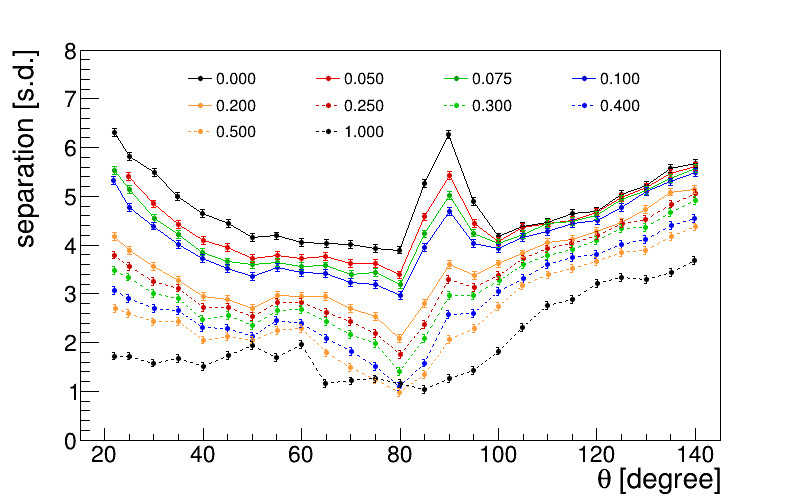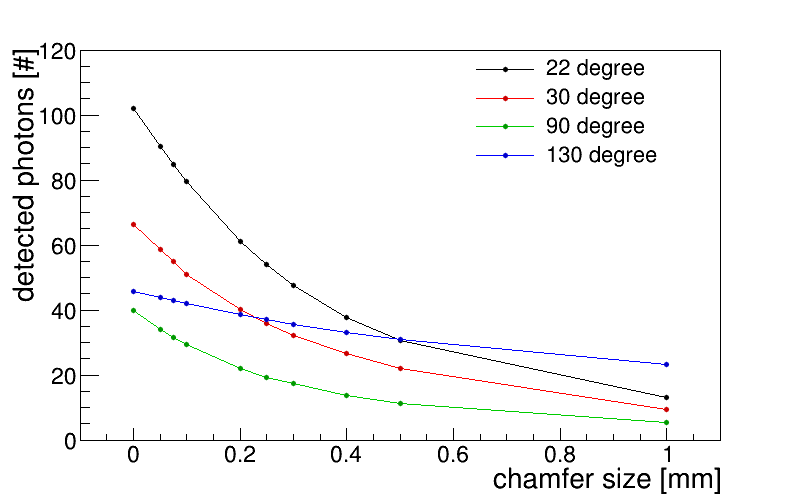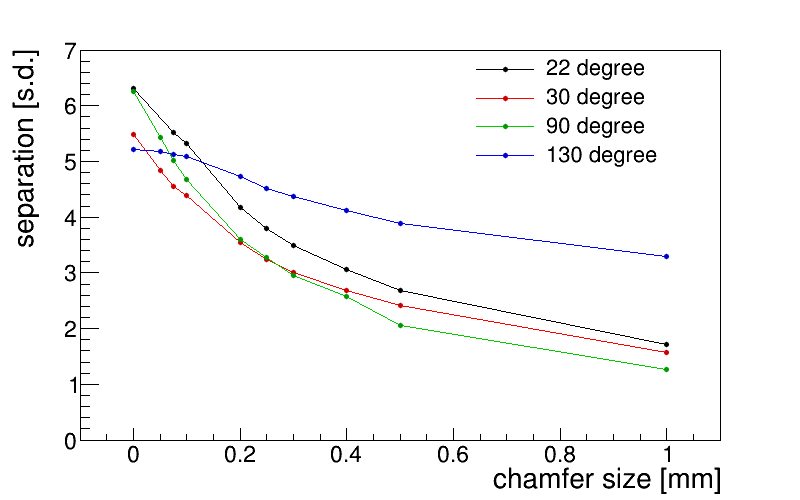Implementation of the chamfer for the radiator. Performance vs. chamfer size.
- Panda Barrel DIRC geometry configurations
- pions and kaons @ 3.5 GeV/c
- time-imaging reconstruction with full-simulated pdfs
- 30k tracks for pdf generation (per each particle species); 5k for determining separation
- ~2 mrad tracking resolution
- 100 ps time resolution
Implementation of the chamfer for the radiator:
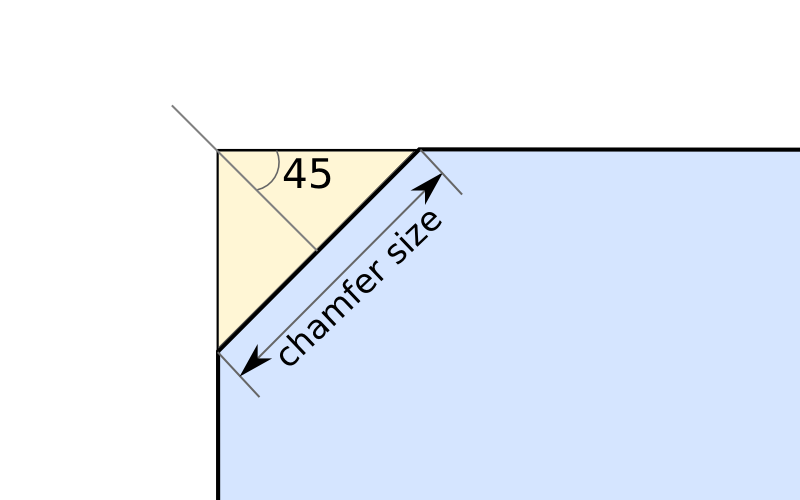

Connection of the two bars (with the glue in the middle):

Projection along radiator length with Cherenkov photons form one kaon; narrow side of the bar with chamfer of 1 mm is shown:
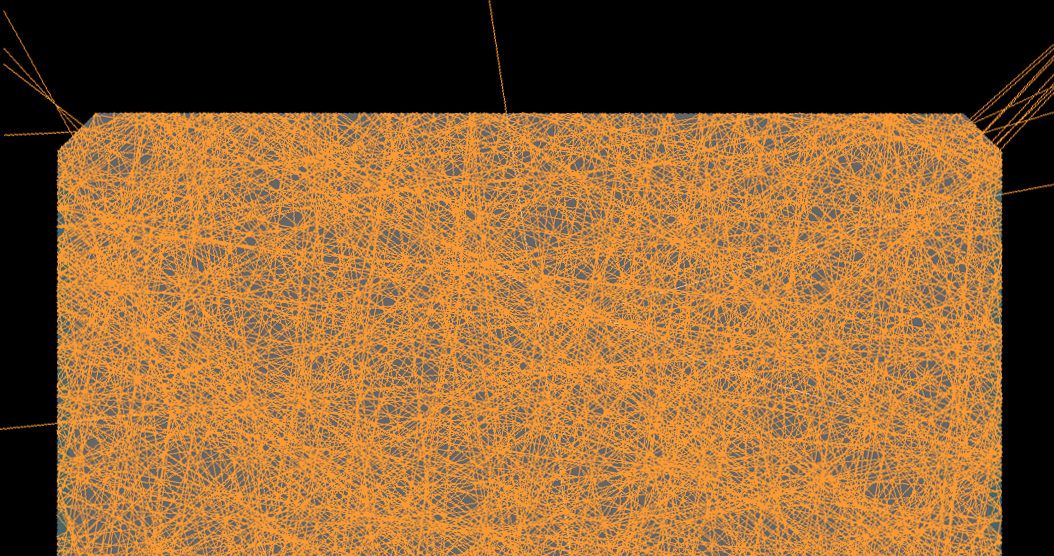
Performance vs. chamfer size for a polished chamfer:
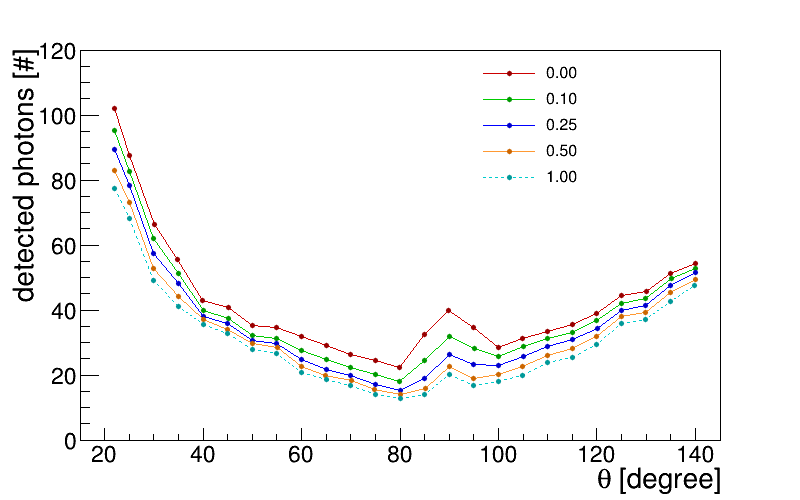
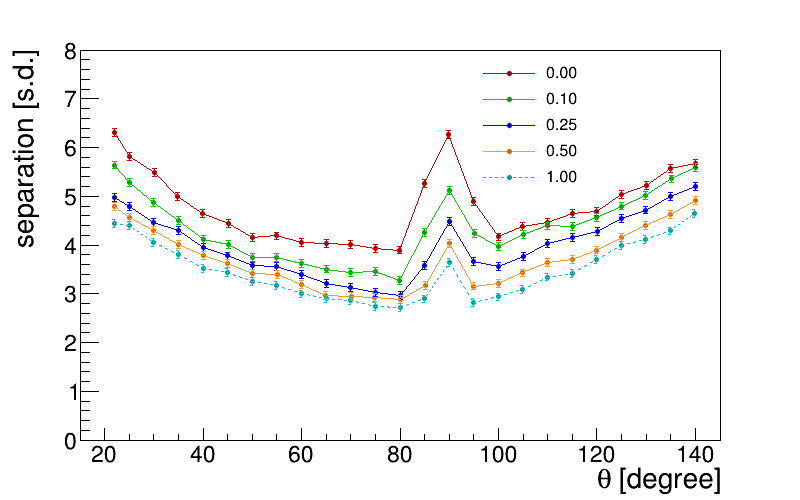
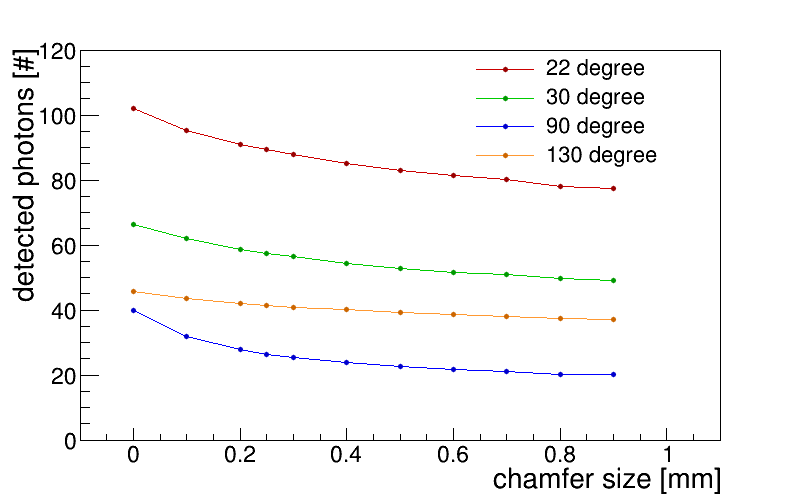
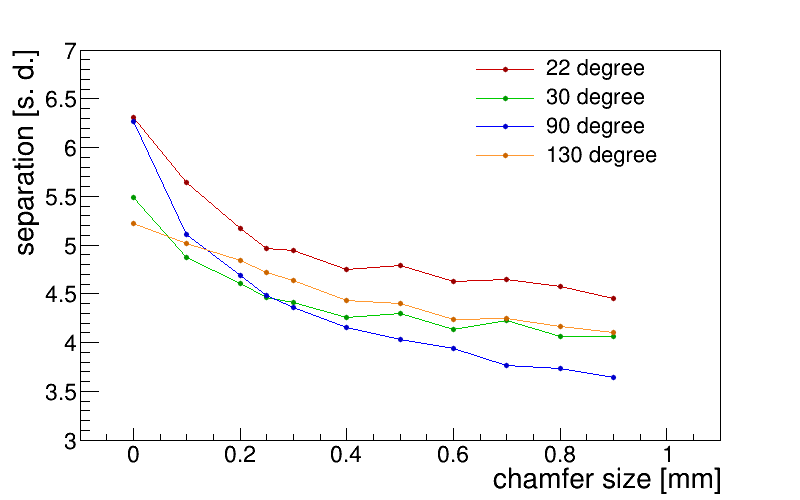
Photon yield @ 22 degree polar angle with different surface finish of the chamfer. The absorption in case of black bevel can be considered as the analog of light attenuation in the material which is described by Beer–Lambert law: I = Io*exp(-a*x) where x would be the photon traveling distance (number of bounces), a - constant proportional to bevel size.
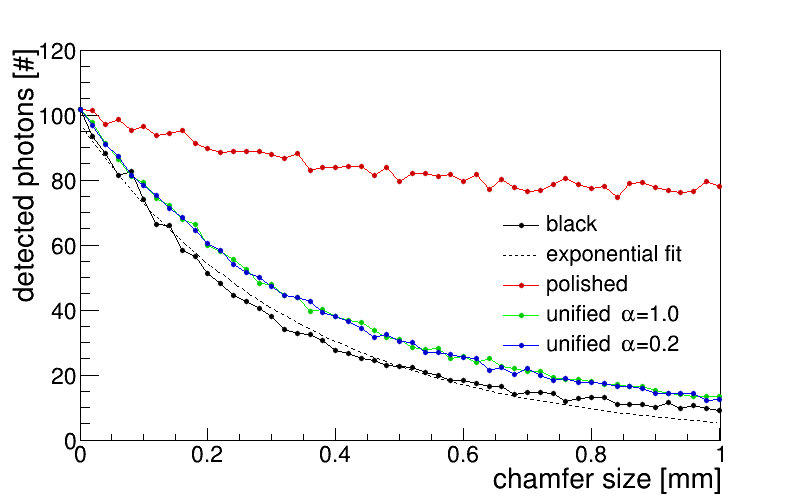
Performance vs. chamfer size for a ground chamfer (unified model with alpha =1):
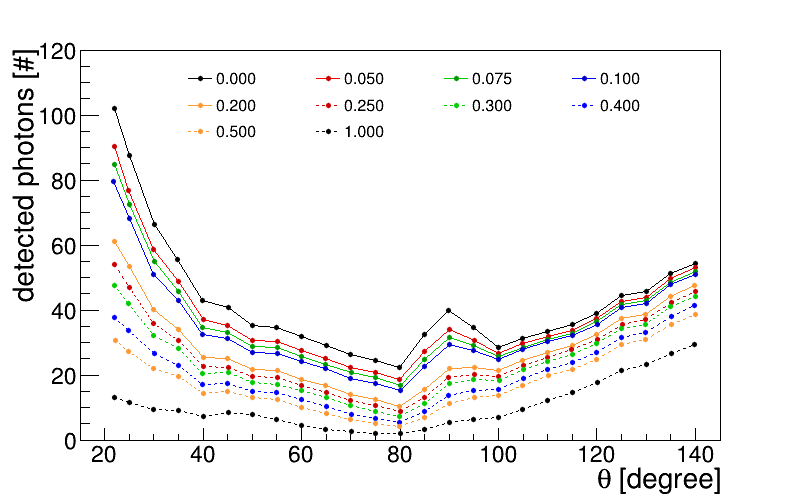
Here the separation plot for 1mm-chamfer is distorted due to low stat for pdfs (as result of low photon yield).
